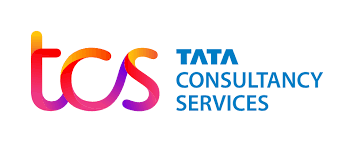Follow us on:



Registered: 5 months, 4 weeks ago
Reducing Information Overload by Creating Concept-Based Review Charts In today’s fast-paced academic BSN Class Help and clinical environments, nursing students and healthcare professionals face an overwhelming amount of information. From textbooks, lectures, clinical guidelines, to research articles, the volume and complexity of content can lead to cognitive overload, impairing learning and retention. Information overload not only hampers academic success but also affects clinical decision-making and patient safety. One highly effective strategy to manage and reduce this overload is the use of concept-based review charts. These visual tools distill complex information into organized, interconnected concepts, enabling learners to grasp key ideas quickly, reinforce understanding, and improve recall. Unlike traditional note-taking or linear study methods, concept-based charts prioritize meaningful relationships and frameworks over isolated facts. This article delves into the nature of information overload in nursing education, explores the benefits of concept-based review charts, and offers practical guidance on how to create and utilize these charts for maximum learning efficiency. Understanding Information Overload in Nursing Education What Is Information Overload? Information overload occurs when the volume of incoming data exceeds an individual’s processing capacity. The brain becomes overwhelmed by too much information at once, leading to: Difficulty concentrating or prioritizing content Poor retention and recall of information Increased stress and fatigue Decreased learning efficiency and motivation For nursing students, this often manifests during exam preparation, clinical rotations, or research assignments, where vast amounts of medical terms, pathophysiology, pharmacology, and patient care protocols need to be mastered. Why Is Nursing Education Prone to Information Overload? Expansive Curriculum: Nursing programs cover diverse subjects, each with detailed subtopics. Complex Terminology: Medical jargon, abbreviations, and layered concepts complicate understanding. Rapid Knowledge Growth: Healthcare knowledge continuously evolves, requiring updates and new learning. Multiple Learning Modalities: Students juggle textbooks, lectures, online modules, clinical experiences, and assignments. High Stakes: The pressure to succeed academically and perform safely in clinical settings adds stress. Recognizing this challenge is the first step to adopting effective strategies for managing it. What Are Concept-Based Review Charts? Concept-based review charts are graphic organizers that arrange key ideas and their interconnections visually. These charts help learners: Break down large bodies of information into manageable chunks. Identify overarching themes or concepts. Understand how individual details relate to bigger ideas. Prioritize essential content for review. Facilitate active engagement and deeper cognitive processing. Unlike traditional notes that may be linear and fragmented, concept-based charts emphasize hierarchy, relationships, and patterns among information. Common Types of Concept-Based Charts: Mind Maps: Central concept in the middle with branches for related subtopics. Flowcharts: Sequential steps or processes displayed with directional arrows. Tables/Grids: Organized rows and columns comparing characteristics. Concept Maps: Nodes representing concepts connected by labeled relationships. Cause-and-Effect Diagrams: Visualizing factors leading to outcomes. Each format can be adapted to the learning task, preference, and content complexity. Benefits of Using Concept-Based Review Charts Simplifies Complex Information By focusing on key concepts and their relationships, charts filter out extraneous details, reducing cognitive load and making the content more digestible. Enhances Memory and Recall Visual organization engages spatial memory and associative learning, which helps store and retrieve information more effectively. Encourages Active Learning Creating charts requires nurs fpx 4905 assessment 1 analyzing, categorizing, and synthesizing information rather than passively reading or memorizing. Provides Quick Reference Tools Charts serve as concise study aids for rapid review before exams or clinical practice, saving time. Supports Critical Thinking Mapping relationships fosters understanding of cause-effect, hierarchies, and patterns essential for clinical reasoning. Adapts to Diverse Learning Styles Visual learners particularly benefit, but the process of chart creation supports kinesthetic and auditory learners when done collaboratively or with verbal explanations. Facilitates Integration Across Subjects Concept-based charts help link knowledge from anatomy, pharmacology, pathophysiology, and nursing care into cohesive understanding. How to Create Effective Concept-Based Review Charts Creating review charts is a skill that improves with practice. Here is a step-by-step guide: Step 1: Define the Scope and Purpose Clarify the topic and your goal. Are you summarizing a chapter, reviewing a disease process, or preparing for a pharmacology test? Defining scope helps maintain focus and prevents overcrowding. Step 2: Gather and Organize Information Review your textbooks, lecture notes, and credible sources. Highlight essential concepts, definitions, processes, and classifications relevant to your topic. Step 3: Identify Key Concepts and Relationships Look for major ideas that serve as the foundation. Ask: What are the primary categories? How do these concepts connect or affect each other? Are there cause-effect relationships, sequences, or comparisons? Step 4: Choose the Appropriate Chart Format Select a format that suits your material. For example: Use a mind map for broad topics with multiple branches. Use a flowchart for procedural or sequential content. Use a table to compare medication classes or symptoms. Use a concept map for showing complex relationships. Step 5: Create a Rough Draft Start with a rough sketch on paper or a whiteboard. Place the main concept centrally and add branches or nodes for subtopics. Don’t worry about neatness initially. Step 6: Add Details and Connections Fill in definitions, examples, or key facts under each concept. Draw arrows or lines to show connections, and label them if necessary. Step 7: Review and Refine Check for accuracy, completeness, and clarity. Remove redundant information and ensure logical flow. Step 8: Finalize the Chart Use digital tools like Canva, MindMeister, Lucidchart, or Microsoft PowerPoint to create a clean, shareable version. Color-coding and icons can improve visual appeal and differentiation. Practical Examples of Concept-Based Review Charts Example 1: Mind Map for Cardiac Physiology Central node: Cardiac Physiology Branches: Heart Anatomy, Electrical Conduction, Cardiac Cycle, Blood Flow, Common Disorders Sub-branches include valves, pacemaker cells, systole/diastole, and diseases like MI or CHF. Example 2: Flowchart of Medication Administration Process Sequential steps: Prescription → Verification → Preparation → Administration → Monitoring → Documentation Notes on safety checks and patient rights at each step. Example 3: Table Comparing Antibiotic Classes Antibiotic Class Mechanism of Action Spectrum Common Side Effects Nursing Considerations Penicillins Cell wall synthesis inhibition Gram-positive Allergic reactions Assess allergies Macrolides Protein synthesis inhibition Broad GI upset Monitor liver function Tips for Using Concept-Based Charts Effectively Integrate Charts into Regular Study Routines Use charts as part of daily or weekly reviews rather than last-minute cramming. Collaborate with Peers Creating charts in study groups promotes discussion, clarifies doubts, and enriches content. Customize Charts to Your Needs Adapt complexity, language, and visuals to your learning style and course requirements. Update Charts Frequently As new knowledge emerges or understanding deepens, revise your charts to keep them relevant. Use Charts for Teaching Others Explaining charts to classmates reinforces your own mastery. Addressing Common Challenges Challenge 1: Feeling Overwhelmed by Chart Creation Start small with simple topics and gradually build complexity. Challenge 2: Lack of Confidence in Visual Skills Use digital tools with templates or collaborate with visually skilled peers. Challenge 3: Overloading Charts with Too Much Information Focus on concepts rather than minutiae. Keep charts concise and clear. Incorporating Technology in Concept-Based Chart Creation Digital tools can enhance the process: Mind Mapping Software: MindMeister, XMind Diagram Creators: Lucidchart, Microsoft Visio Note-Taking Apps: OneNote, Notion (with embedded charts) Presentation Tools: PowerPoint, Canva Benefits include easy editing, sharing, and embedding multimedia. Real-Life Impact: Evidence Supporting Concept-Based Learning Research shows that concept-based learning tools improve critical thinking, knowledge retention, and application in clinical settings. Students trained with concept maps demonstrate better problem-solving and clinical decision-making skills. Conclusion Information overload is a major barrier to effective learning and safe practice in nursing. Concept-based review charts offer a strategic solution by visually organizing and simplifying complex information. By focusing nurs fpx 4055 assessment 2 on key ideas and their relationships, these charts reduce cognitive load, enhance memory, and promote active learning. Whether preparing for exams, mastering clinical concepts, or integrating interdisciplinary knowledge, students who use concept-based charts can study smarter, not harder. The skill of creating and using these charts is an invaluable asset for lifelong learning and professional excellence in nursing. Start small, stay consistent, and watch as complex information transforms into clear, manageable knowledge.
Topics Started: 0
Replies Created: 0
Forum Role: Participant













